
E-journal April 13, 2010 |
View past ejournals HERE>> Sign up for our newsletter below. When my kids were younger, we didn’t allow them to watch much TV, but one of their favorite cartoons was called Pinky and the Brain. Pinky and Brain were two genetically altered lab mice living in a cage in the Acme Labs research facility. Brain was a genius who was obsessed with world domination and Pinky was incredibly dense. So every night Brain would devise a new plan to take over the world. But each night his plan failed, usually due to Pinky's bumbling. Brain: Pinky, are you pondering what I'm pondering? Brain: Pinky, are you pondering what I'm pondering? Brain: Are you pondering what I'm pondering? So at random moments—like during science when we were studying flowering plants—one of the boys would blurt out, “Are you pondering what I’m pondering?” and another would give some Pinkyesque response like, “Yes Brain, but if my ears were on my toes I couldn’t hear with my shoes on.” A Day in the Life of A Homeschool Mom
That’s what my days were like—running on a hamster wheel thinking I was finally getting somewhere. Many of you responded telling me that your days were like that too. Someone described her day like that “Bopping Gophers” arcade game where gophers keep popping up faster and faster and you have to keep “bopping” them in order to score in the game. So I promised to share some of the tips that helped me get “off the wheel” and finally get somewhere. The Four Rules to Getting Off the Wheel I needed to de-chaos my life—not just of physical chaos, but also of the mental, emotional, and relational “chaos” and “clutter” that drain us of energy and cause us to feel overwhelmed and undersupported. What helped me the most? Becoming aware of beliefs and fears that caused me to keep holding on to people, activities, and things long after it was time to move them on their way. Awareness is the first step to being able to let them go. 1. First, I began recognizing and trying to eliminate the “energy vampires” in my life that we talked about in previous newsletters about clutter. (Read part 1 HERE, part 2 HERE, and part 3 HERE.) 2. Second, I began applying 4 simple rules to everything about my life—from my home to my lifestyle to my relationships and activities. The 4 Rules are based on the 80/20 Principle. Anyone who knows anything about me knows that I am a big fan of trying to implement the 80/20 Principle in every area of life. What is the 80/20 Principle? It is the scientifically proven principle that approximately 80 percent of the results you want will come from 20 percent of your effort. Briefly stated, the 80/20 Principle says that 20 percent of what we do leads to 80 percent of the results we seek; but 80 percent of what we do leads to only 20 percent. We are wasting 80 percent of our effort on low-value outcomes. What this means is that there are a few key things that keep us on “the wheel,” that make us feel overwhelmed and under-supported, that contribute to that feeling of always being on edge and the tenseness in our bodies, and that make us want to throw up our hands and quit. The depressing fact of the 80/20 principle is that we are spending a lot of our time, energy, and money on things that have little value to us. As Richard Koch, author of The 80/20 Principle comments, “We consistently undercultivate what is important.” But the promise of the 80/20 principle is that, if we can identify the 20% of people, interests, and activities that lead to 80% of the kind of life we want, we can work less, enjoy more, earn more, and achieve more. Rule #1: Be “80/20” and “margin” conscious. In his wonderful books Margin and The Overload Syndrome, Richard Swenson defines “margin” as the space that exists between people and their personal limits. He discusses that many of us have squeezed that space out of our lives so that we live chronically overextended lives wishing for more time, more energy, more money, and deeper relationships. Margin is the time you need to spend on things that are important to you; the emotional reserves to develop deep, meaningful relationships; the financial reserves to spend on what would enhance your life and your relationships; and the physical health to be able to do what you love to do. The idea of “margin” blends well with the 80/20 Principle. It is the 80% of people, things, and activities of low value that tends to fill the “space” in our lives and eat up our margin. Margin is also “space consciousness.” We need to clear the clutter in our “inner space” as well as our outer space. Sometimes new and better things and relationships can’t come into our lives because there is no space for them. We need to get rid of the old and unproductive that is taking up space in our lives (physically, emotionally, mentally, financially, etc.) to make room for the new. And sometimes we actually need to find more space. Having too many things in too small a space means one of two things must happen—either we cut down on the number of things we have or we move to a bigger space. Rule #2: Everything you own, do, or are involved in should have value to you. What determines value? First, there is functionality. Does this possession, relationship, or activity serve a real function in your life? Or is it just another form of physical, mental, emotional, or spiritual clutter? Worse yet, does it drain you of energy? We’ve already talked about “energy vampires,” but there are also other ways things can affect our energy. Some things just make you tired thinking about them. For example, I have a rug scrubber, but it’s such a pain in the neck to use that I find myself getting tired each time I think about cranking it up. It’s just easier to spot clean the carpet. If you find you have things in your life that are like my rug scrubber, although they are functional, the hassle it takes to use them negates their functionality. And last month, in a fit of inspiration, I bought several bundles of strawberry plants dreaming of how wonderful it would be to create a raised bed strawberry garden. Reality hit when I got the plants home and thought through what it would take to actually reach my vision of a bed of ripe, delicious strawberries. The more I thought about it, the more exhausted I felt. So the strawberry plants are going back to the nursery. Second, there is beauty. Beauty is an expression of God’s love so it has the ability to heal, soothe, inspire, and renew. Is this possession, relationship or activity “beautiful” to you in that it soothes, inspires, and renews you physically, mentally, emotionally, or spiritually? New Agers believe that everything emanates its own spectrum of energy and some things emanate an energy that is draining while other things emanate an energy that is uplifting. I kind of agree with them because I’ve had the experience of paintings or music or the way a room is decorated just totally turn me off or even make me feel creepy. But I’ve also had the experience of stepping into a room and feeling suddenly lighter and more cheerful. For example, I’ve always loved the look of log homes from the outside, but every one I ever went in felt claustrophobic and dark to me no matter how beautifully it was decorated. The ceilings always seemed too low because of the dark wood and massive beams. When we were looking for our home, the realtor kept suggesting a log home he thought would be perfect for us. But I didn’t even want to see it because the inside of log homes always seemed dark and close to me. But the agent persisted until we looked at the house and it turned out that this log home was different. It had high ceilings and windows all around to let in plenty of light. And the interior dividing walls were finished like a regular, drywalled house. In other words, the rooms felt spacious and light. We’ve owned that house for 16 years now. Third, there is love. Do you really love and enjoy this possession, relationship, or activity? To determine which possessions have value to you, ask yourself, “If I had to move everything I own into a house half as big as the one I live in now, would this be one of the things I would choose to take?” That's your baseline for determining an object's worth. To determine which relationships and activities have value to you, ask yourself, “If I went away for a year, would I want to pick this back up when I returned?” That’s your baseline for determining a relationship’s or activity’s worth.This newsletter is already way too long, so I'll wait until next time to share Rules 3 and 4. Until then, have a great week! Ellyn Helpful resources for the chaotic, cluttered and overwhelmed:
The Overload Syndrome by Dr. Richard Swenson. This book is written like a “prescription” for overloaded lives. Through humor and a great deal of common sense, Swenson shows how you can carve out margin in four key areas of your life: emotional, physical, time and financial. By becoming Goal-Focused and God-Focused, you can unplug and eliminate a large portion of the stress in your life. This book can truly change your life if you follow its “prescriptions” for moving from a life of overload to a life like God intended it to be. The 80/20 Principle, Living the 80/20 Way, and The 80/20 Individual by Richard Koch. Each of these books approaches the 80/20 Principle from a slightly different slant, but all three of them teach you ways to narrow down the 20% of people, interests, and activities that lead to 80% of the kind of life we want. I highly, highly recommend these books! Any article appearing on this website may be copied or forwarded electronically provided that proper credit is given and that the article is not substantively modified. No article may appear in whole or in part in a publication sold for profit or as part of any commercial endeavor without the written consent of Home School Marketplace. Any reprint must include an acknowledgement of where it came from and the sentence "Sign up for the Home School Marketplace newsletter at www.homeschoolmarketplace.com." |
Our friend Susan is a home schooling Mom and she is very concerned about her children's health. Her son, Liam is allergic to almost every chemical known to man, so Susan has to be very, very careful what she allows him to play with. When he gets together with other children and they play with Play Doh, Liam can't play. The dyes and chemicals in the dough can not only make him very sick, they might kill him. Home School and Home Business With over 4,000 copies sold in just a few months, I Saw the Angel in the Marble is becoming a home schooling best seller! This book represents the best of 15 years of Elijah Company articles. Find our more HERE>>
If you missed one of our From Home School to Home Business Conferences, you missed a great time.People who attended told us that it changed their lives—not only in the area of home schooling, but also in the area of creating their own sources of home income.This set is huge and filled with useful and encouraging information about how to be successful at home schooling and at home business! Find out more about this life-changing set of CDs HERE>> Building the Business of Your Dreams (8 CD Set) We've had requests for just the business portion of the From Home School to Home Business Seminar, so have developed a set of the business CDs from that set. It contains 8 CDs and includes sessions on The Entrepreneurial Mind, Multiple Streams of Home Income, Discovering Your Ideal Life and Ideal Business (2 CDs) , Developing a Business Plan (2 CDs), and The Importance of Business Relationships. Plus, there is a very important and insightful interview on Redeeming the Marketplace. Find out about this life-changing set of CDs HERE>>
Left Brained Finance for Right Brained People is hands down the best book we've ever found about money and finances and how to manage both. It could be used as the core curriculum for a Money and Finance unit with junior highs and up or by parents to have an overall understanding of money and how it works so they can teach their children. GO HERE>> to order.
Helpful resources for the chaotic, cluttered and overwhelmed:
The three books below take an organizational approach to clutter-overwhelm and are packed with tips and hints for tackling clutter and disorganization. Each takes a slightly different approach but each has provided me with indispensible help in curing my packratness and disorganization:
Getting Organized by Stephanie Winston Simply Organized by Emilie Barnes I don't care what your budget, buy these two books from Jeff Campbell: Clutter Control and Speed Cleaning. Why buy them? Because if you're like me, you probably already thought you know how to clean but couldn't stand to. Campbell explains that the main reason you can't stand to clean is because you're using all the wrong methods and the wrong products. Quite If you are a hard-core clutterer and have tried the more traditional approaches, the two books below are for you: Sidetracked Home Executives: From Pigpen to Paradise by Pam Young and Peggy Jones. These two sisters share the system of organizing household chores that they created to make managing a home less time consuming and more efficient. This recently updated handbook explains how to reduce chaos and clutter and achieve organisation in the home.
Be sure to sign up for our ejournal! Sign up below. © Copyright 2010. Home School Marketplace |
 I Think I'm Finally Getting Somewhere!
I Think I'm Finally Getting Somewhere!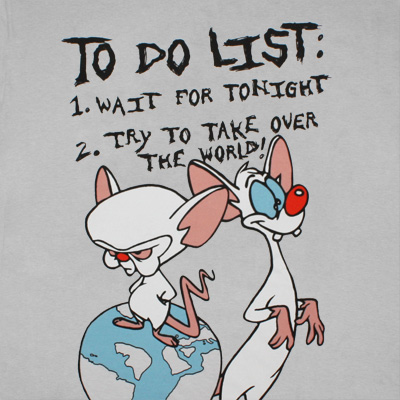 In a
In a 
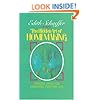
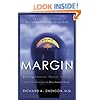 Margin
Margin


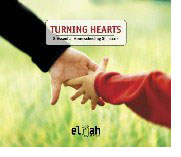


 The Path of Least Resistance
The Path of Least Resistance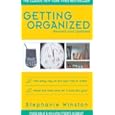 Getting Things Done
Getting Things Done  frankly, my mother never showed me how to clean a house and I can safely say -- since my mother won't be reading this -- that my mother knew zip about the right way to clean a house. First, get rid of your clutter using
frankly, my mother never showed me how to clean a house and I can safely say -- since my mother won't be reading this -- that my mother knew zip about the right way to clean a house. First, get rid of your clutter using  The New Messies' Manual: The Procrastinator's Guide to Good Housekeeping
The New Messies' Manual: The Procrastinator's Guide to Good Housekeeping